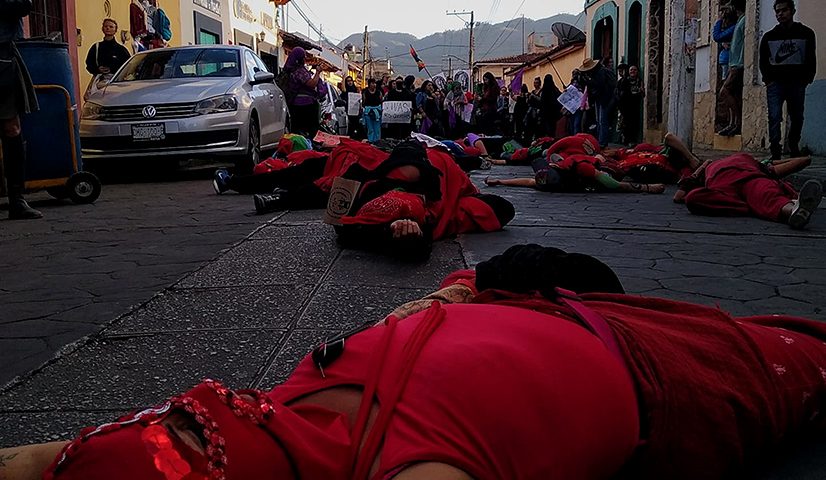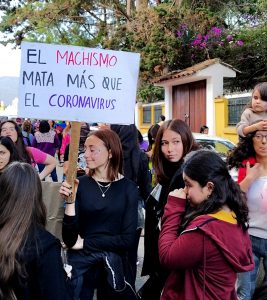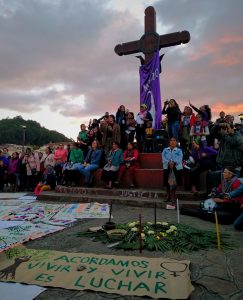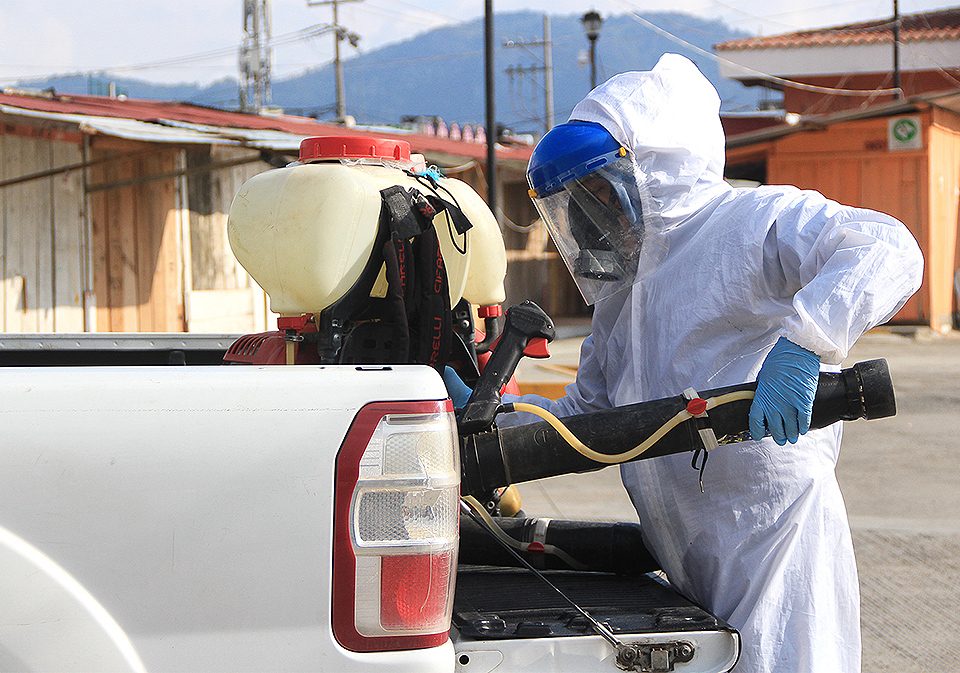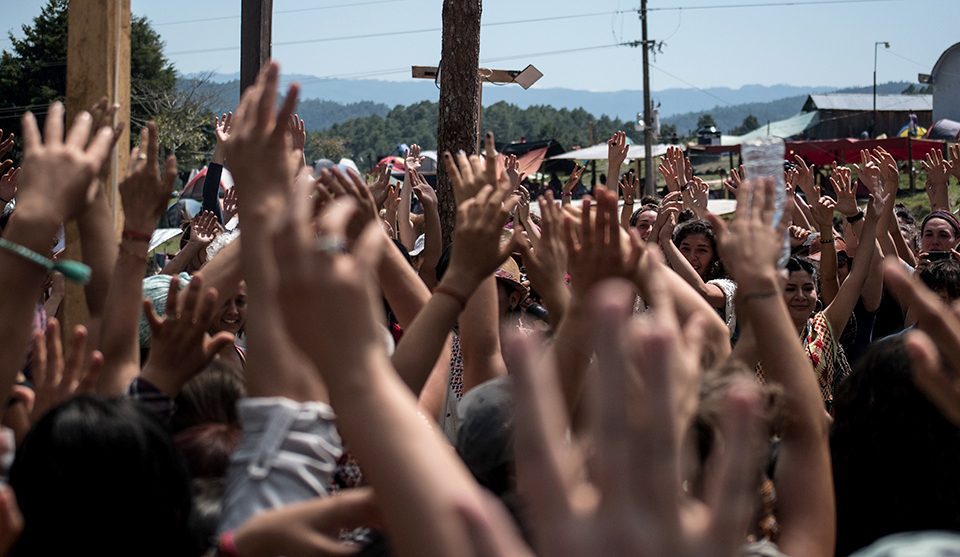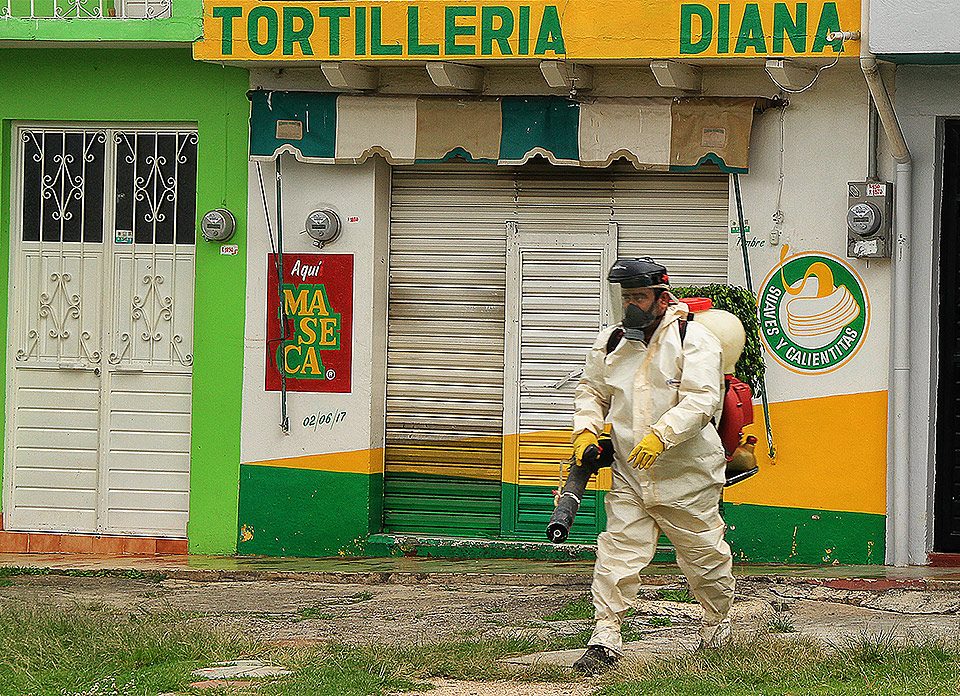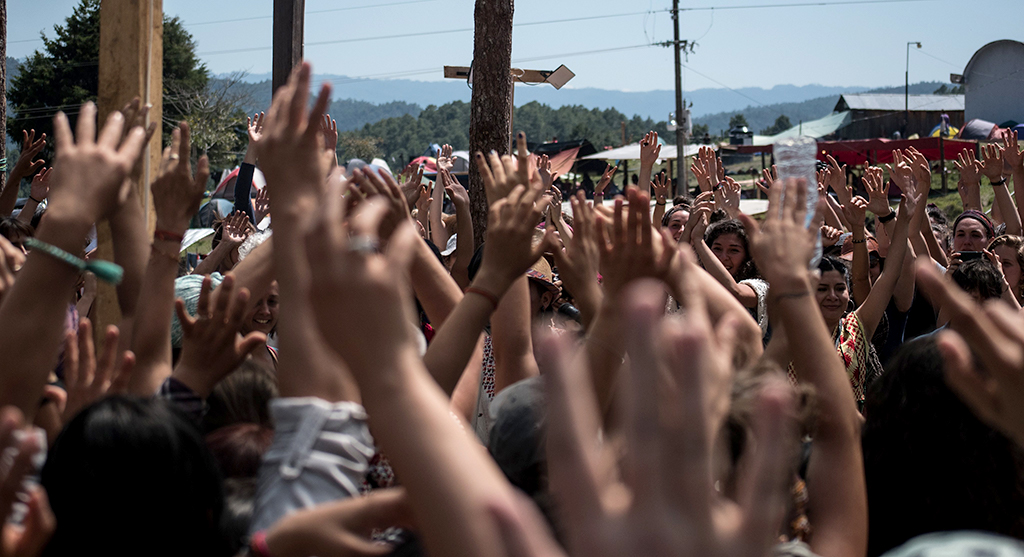
FOCUS: Gender Violence – Fighting Another Pandemic
03/06/2020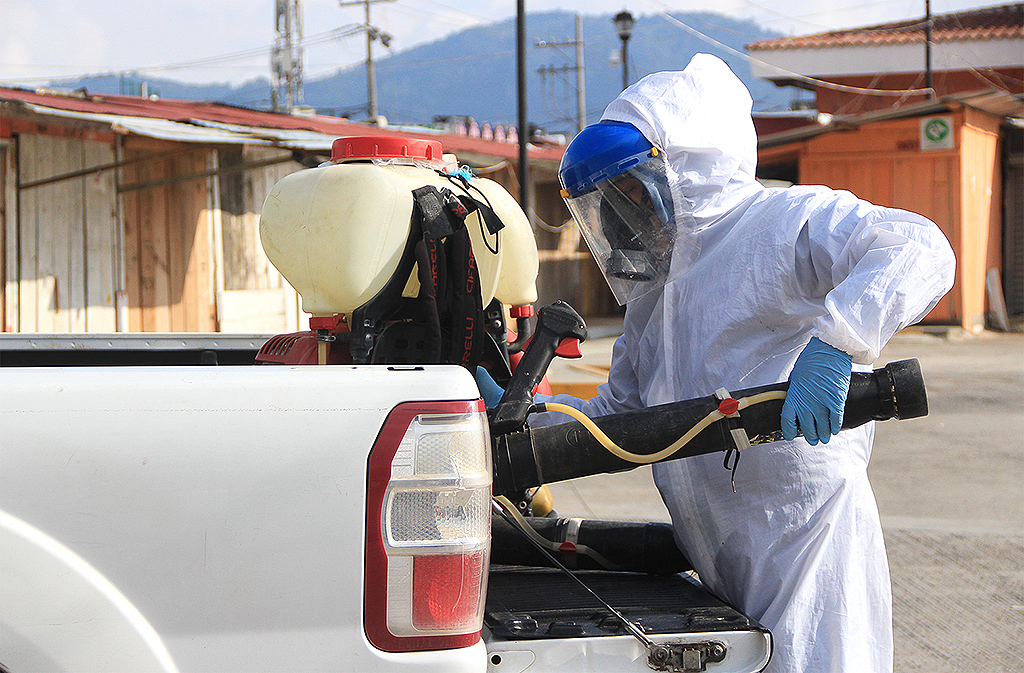
SIPAZ Activities (Mid-February to Mid-May 2020)
03/06/2020“Outbreaks of disease affect women and men differently, and pandemics exacerbate existing inequalities for women and girls, as well as discrimination against other marginalized groups such as people with disabilities and those in situations of extreme poverty.” [1]
In recent months, a health situation has been experienced that has allowed many women to occupy other spaces of information, dissemination, political leadership, and personal and collective reflection.
Nevertheless, questions about the violation of their rights also continue during this pandemic. When various national governments announced the need to observe a period of lockdown, some international organizations expressed their concern about the inevitable increase in gender violence that this would cause, as well as the threat it represents for many women and girls in Mexico, Latin America and the entire world.
The UN Regional Office of Women for the Americas and the Caribbean reported that women, girls and adolescents may face additional obstacles to flee from violent situations or access to aid services, especially if there are movement or quarantine restrictions. Furthermore, the evidence shows that avoiding other alternative spaces to the home represents a greater threat to victims, since the home is often the place where the most abuse and violent behavior occur.
Although gender-based violence manifests itself in many ways, during the pandemic we have seen the rates of digital violence increase, of Internet harassment; we have seen violence that is reinforced by confinement, such as gender stereotypes in which women have all – or almost all – the responsibility of taking care of household chores, the education of their children or care for the elderly; there is talk of xenophobia, economic violence, increased threats to and criminalization of women human rights defenders, discrimination and lack of access to health services by sex workers; There is talk of the vulnerability of older women, with disabilities, with diverse sexual orientation, trans, living with HIV, migrants, displaced persons and refugees, victims of armed conflict, indigenous, Afro-descendant and rural or living in informal settlements[1].
The Government Paradox
In Mexico, the increase in gender violence was noticed in different geographical spaces, but in the same time space: in March, when the #QuedateEnCasa campaign was launched nationwide. In states such as Oaxaca, the “Rosario Castellanos” Women’s Study Group (GES Mujer), carried out an analysis in which 16 violent deaths of women had been registered, seven of which occurred during the month of March, when the lockdown was voluntary, while the other nine murders took place when the quarantine was already considered mandatory. In addition, there was a 26% increase in calls for help to women according to the organization. Thus, in a period of no more than four months, 36 women had been violently murdered, ten of them at home[2].
In other entities such as Chiapas, records indicate that emergency calls for incidents such as sexual abuse and harassment, rape, intimate partner violence and family violence also shot up with 115,614 calls, that is, an average of 155 women suffered violence every hour[3]. The Attorney General’s Office of the State of Chiapas published in its report on crime incidence in Gender Violence Alert an increase in cases between 2019 and 2020. Thus, between January and March of this year, a total of 1,733 cases were registered, of which 1,296 were for family violence. In addition, in March, 706 crimes were registered as opposed to 540 documented in February. Tapachula, Tuxtla Gutierrez and San Cristobal de Las Casas were positioned in the top three municipalities with the highest incidence[4].
The evidence was in confrontation with the opinion of the President of the Republic, Andres Manuel Lopez Obrador, who assured that the supposed increase in gender violence during confinement was not necessarily happening in Mexico. This was coupled with the argument that the same parameters used in other nations cannot be applied to measure this situation, in addition to the fact that the country is experiencing a climate of “fraternity”. He stated that there is no increase in complaints, although he acknowledges that the figures could be wrong[5]. Dozens of civil and feminist organizations responded to these statements, assuring that not recognizing these attacks, normalizes violence against women and puts them and their children at risk.
In addition to the denial of gender violence, there is the recent decision of the federal government to cut the resources allocated to the Houses of Indigenous and Afro-Mexican Women (CAMIs), structures that operate through subsidies from the Indigenous Rights Program that at the same time, is under the National Institute of Indigenous Peoples (INPI) [1], while other services were rated as essential. From this perspective, indigenous women are even more vulnerable than mestizo women since these examples are the only ones to which they have access from their community, in addition to the fact that the support given is in their language and protects and accompanies women, adolescents and indigenous girls, in those places where the State does not reach.
The Birth of Alternative Projects
However, while some government institutions supporting women suspend their services in whole or in part, other players in society begin to mobilize. Civil organizations and feminist collectives sought to adapt their work to continue offering psychological or legal support from a distance, even if this represents a real challenge. Therefore, solidarity initiatives were born, by and for women.
In Mexico City, a mapping of all government institutions, groups and civil organizations that are providing support to women was made by state, resulting in a digital document accessible to those who have access to internet: the Feminist Directory “Machismo Is not in Quarantine” put together by activist and feminist Estefania Veloz, lawyer and journalist Frida Gomez and parliamentary adviser in the Senate of the Republic, Andrea Chavez.
In the Southeast region of Mexico, pro-Zapatista organizations organized a “Global Week of Action for Life” in which people were invited not to abandon, among other things, the fight against the violence of feminicide. This call took the motto #ElEncierroNoMeCalla (the lockdown won’t silence me], with which it summoned to participate in workshops, conversations, analysis, etc. on various topics, including the importance of a gender perspective during this pandemic. With this motto, academics, activists, indigenous leaders, lawyers, journalists, psychologists and other specialists came together to participate and make this historical problem visible, but within the current health context.
Another social media campaign was recently launched called #AislamientoSinViolencia (isolation without violence), coordinated by the Oaxacan Consortium for Parliamentary Dialogue and Equity, GESMujer, Ixmucane AC, Meraki, Weaving Community and the Network for Sexual and Reproductive Rights, Oaxaca[2], which joined civil society, feminist groups and government institutions.
Another example is that of the organizations defending sex workers who started a collection campaign involving private donors, as well as the “Elisa Martínez” Street Brigade of Support for Women AC for the collection of medicines, supplies, food, personal hygiene items, condoms, etc. In addition, access to monthly support for self-employed workers was requested from the Mexico City government[3].
It is evident that reflection should continue on how information and support for women during this pandemic can be accessible to all, not only to one type of woman, but to all the diversity that exists among them; thought should also be given to the integration and participation of a broader spectrum of society in the fight against gender violence. Access to technology is not evident for all women who suffer violence, much less for those who live in conditions of extreme poverty, indigenous women, women with any type of disability or even who live in all three situations and who suffer all these problems.

